Hands down, a chef’s knife is the most useful tool in the kitchen. A quality chef’s knife that’s properly maintained will save you time in the kitchen and keep you out of the emergency room (eep!). I’m not sure about you, but I’m hard pressed to remember a meal I’ve made without a chef’s knife at my side.
Despite at least one of these knives existing in nearly every home, it’s surprising how many people are unaware of how to hold and wash them. True, as long as you can wrap your fingers around the handle then technically, you’re holding it. And as long as you remove the grime off with water, you’re washing it. And yes, it will still be useful that way, though there is a more effective and safe method, and that’s what we’re going to cover in this cooking essentials post.
Let’s cut to the chase. (Oh yeah, pun totally intended.)
How to Hold a Chef’s Knife
The most stable and safe way to hold a chef’s knife is the pinch grip, also known as “the claw.” It’s not difficult, but can take a little bit of time to adjust if you’re used to something else. The claw is fairly simple: choke up on the handle and pinch between the spine and heel with your index finger and thumb. (Scroll down a tidbit to see a knife anatomy chart.)
This is where you place your index finger.
This is where you place your thumb. Notice that the rest of the fingers are up a little further on the handle, near the bolster.
Using this grip, you can now perform high cuts, low cuts, and everything in between with less effort and more control. It also gives your wrist some flexibility. Avoid the temptation to place your index finger along the chef’s knife’s spine or to only hold the handle. Both of those grips are more wobbly and insecure. While you can still use them, you will forfeit some of your control. This grip also applies to a santoku and similar knives.
If needed, you can use this anatomy chart as a knife parts reference.
How to Wash a Chef’s Knife
If you only remember one thing, remember this: never ever wash your knives in the dishwasher. Here’s why:
- It’s dangerous for anyone loading or unloading the dishwasher.
- Dishwasher detergents are abrasive, and over time promote blade corrosion.
- The heat and moisture will ruin the handle.
- As the knife bangs around, it will dull the blade.
So how do you wash your chef’s knife? There are multiple ways. As long as you’re wiping away from the blade and avoiding abrasive cleaning surfaces and soaps, you’ll be fine. That being said, the method described below is the safest way I’ve found to wash it.
Rinse the knife, and then place the knife blade against the edge of the sink. Using a soapy rag, wipe away from the blade, spine to edge. Do not wipe from heel to point, as this increases your chance of being cut.
Turn the blade over, and wipe again from spine to edge. Carefully wash the handle and then rinse and hand-dry the knife.
Having the chef’s knife blade against the sink’s edge will reduce any chance of injury. It’s still not fool proof, but it’s close. It also provides a hard surface to press against if food or gunk is stuck on the knife. This knife washing method applies to most knives, including a santoku, cleaver, partoku, bread knife, and more.
That’s it! Have fun cooking, and be safe!
Pin Me!
If you found this instructional helpful, please spread the word. (Original pin here.)
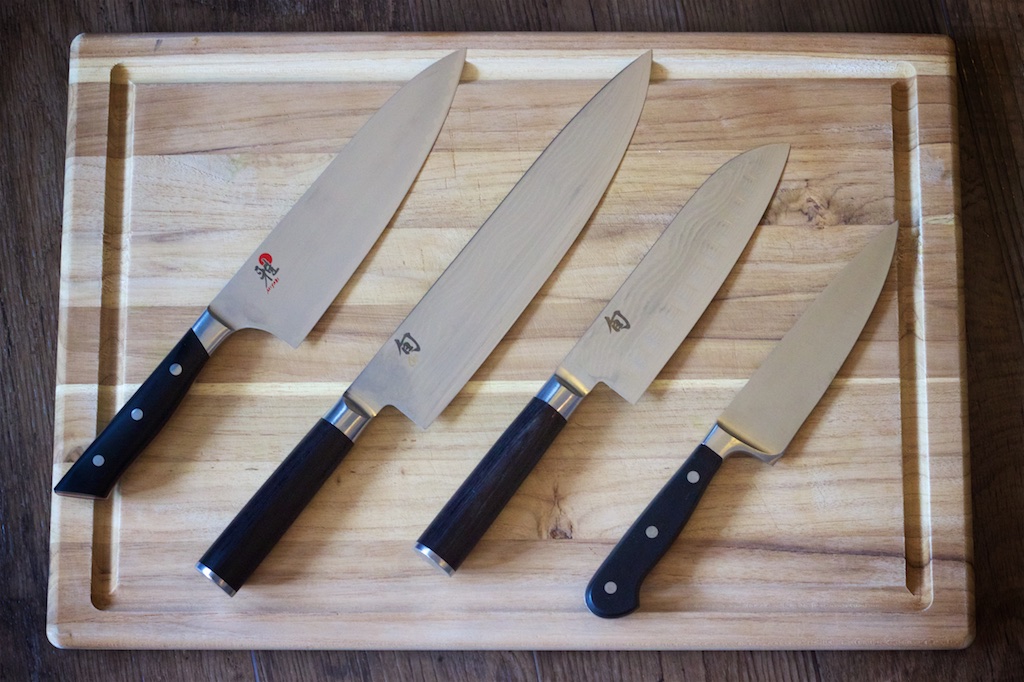
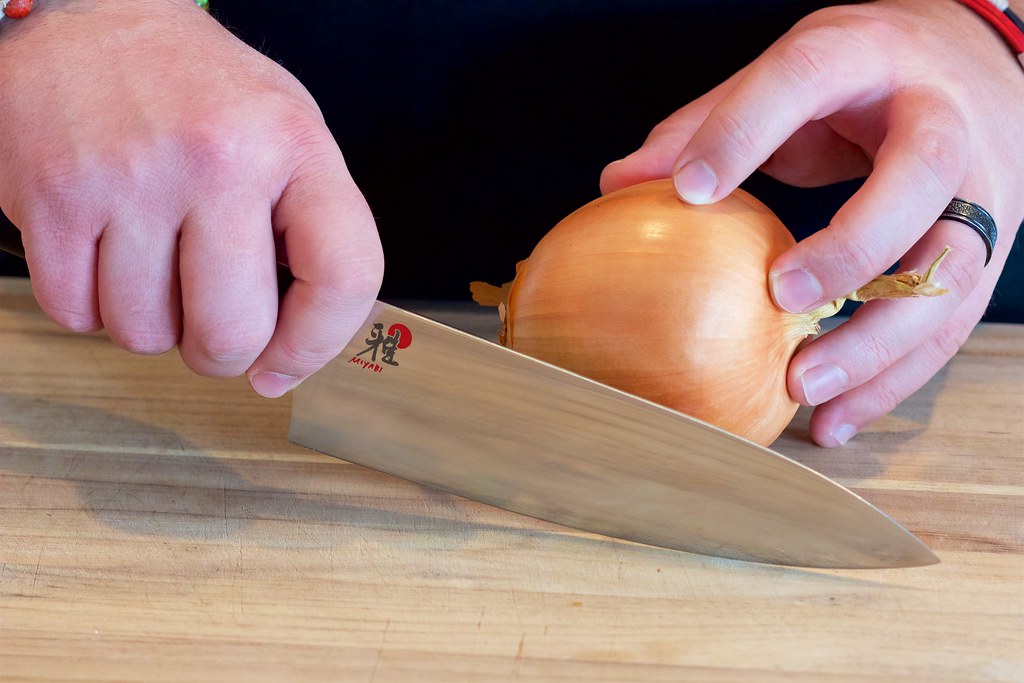
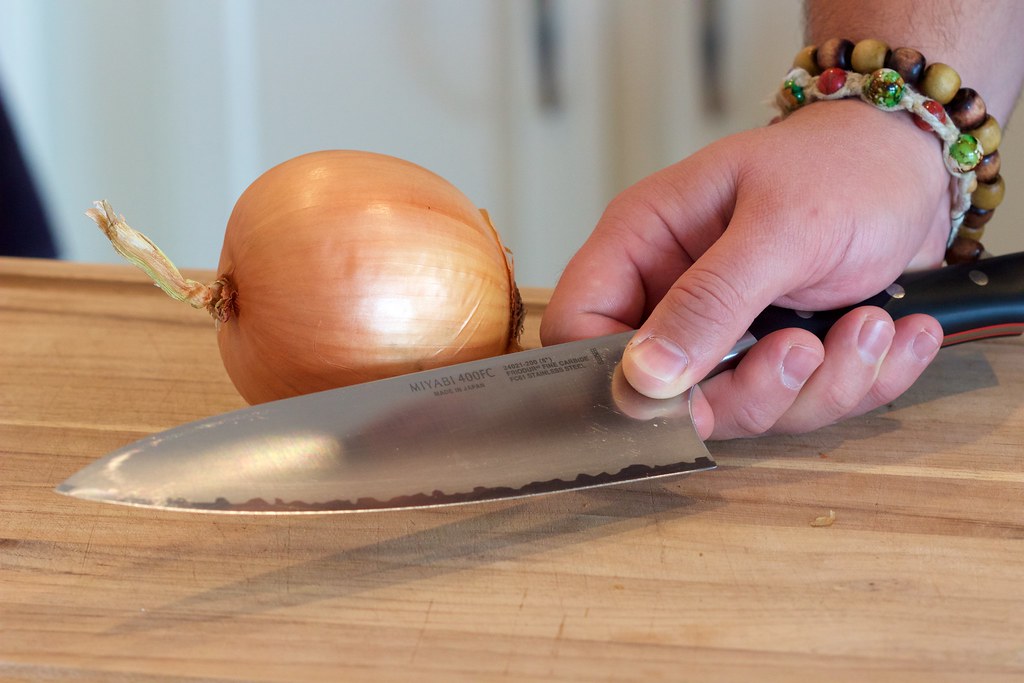
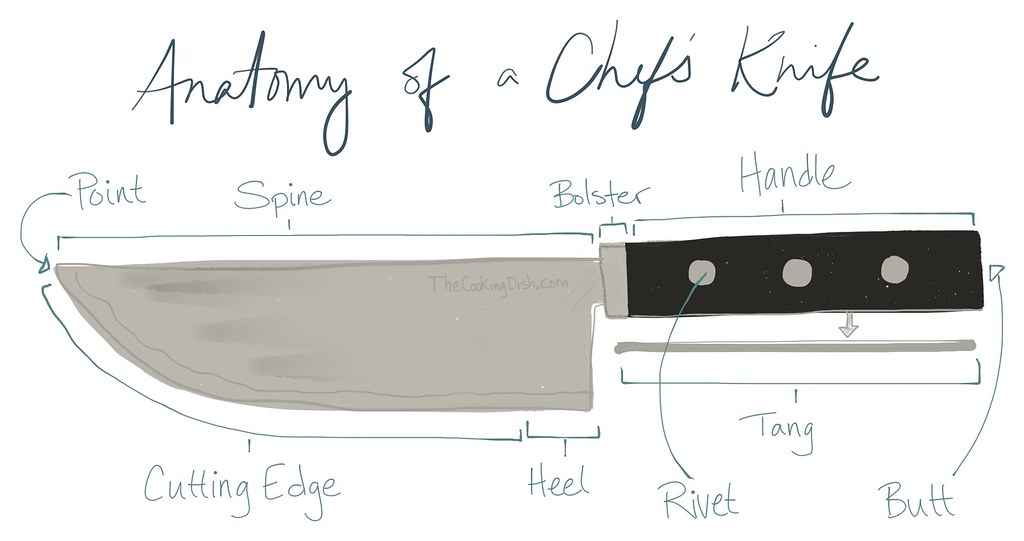
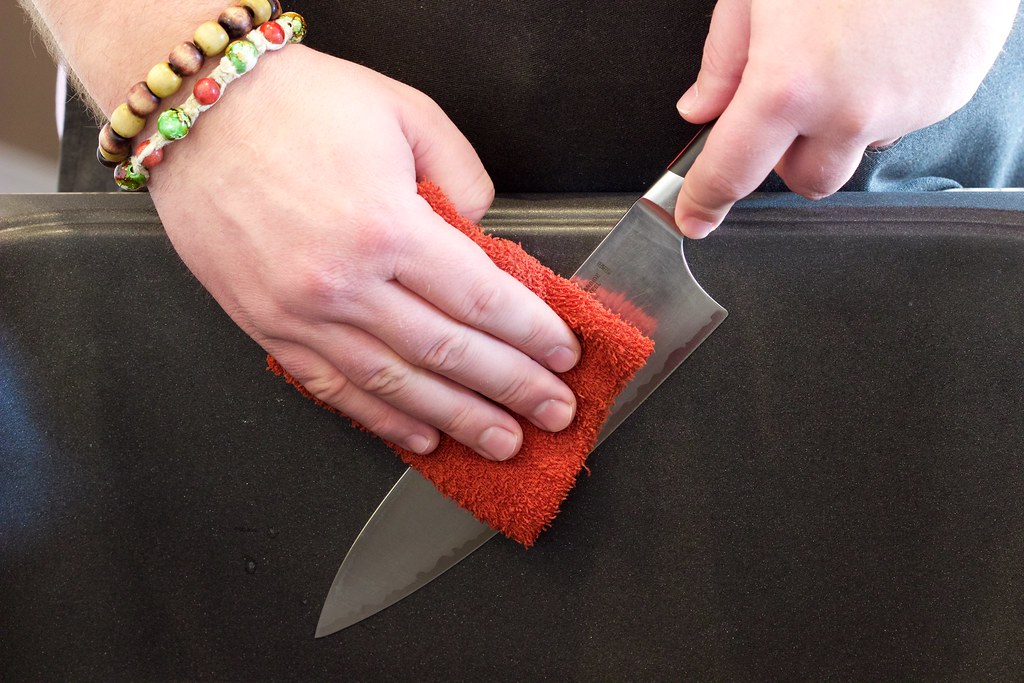
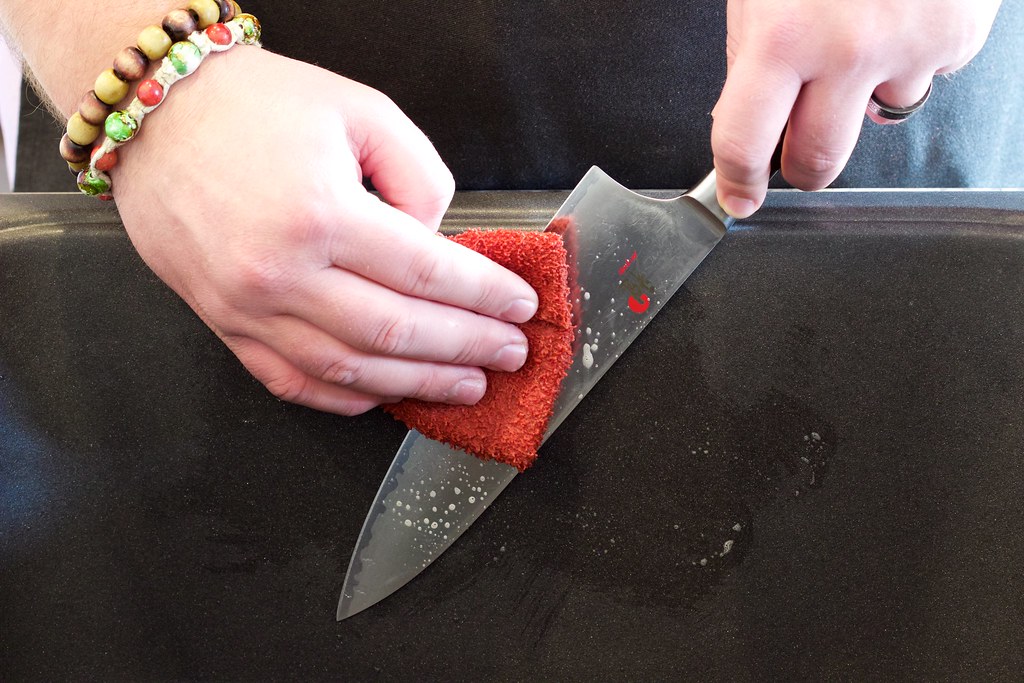
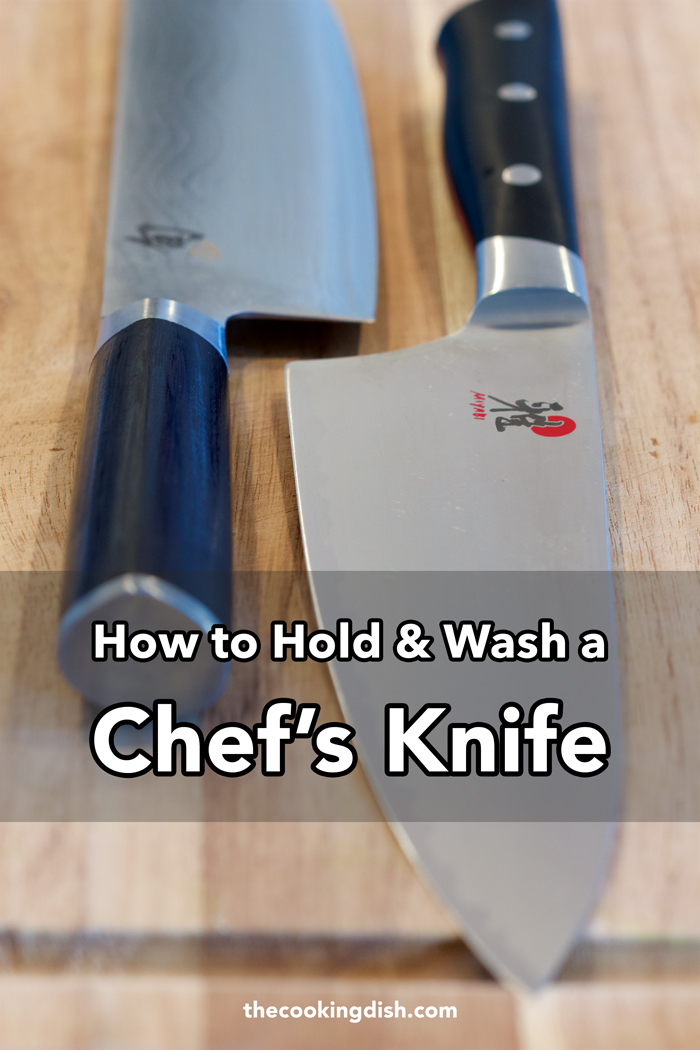
Hi Chris, have you heard about the Skrub Knife Cleaner? It’s the new gadget that makes washing knives uber safe!
Looks like it could be a helpful tool for people. Good luck with it! (link: Skrub Knife Cleaner)
Hi Chris, have you heard about the Skrub Knife Cleaner? It’s the new gadget that makes washing knives uber safe!
Thank you for providing realistic information about how to hold a chef’s knife and wash a chef’s knife. You’ve found the safest way to for washing a knife. Very good.